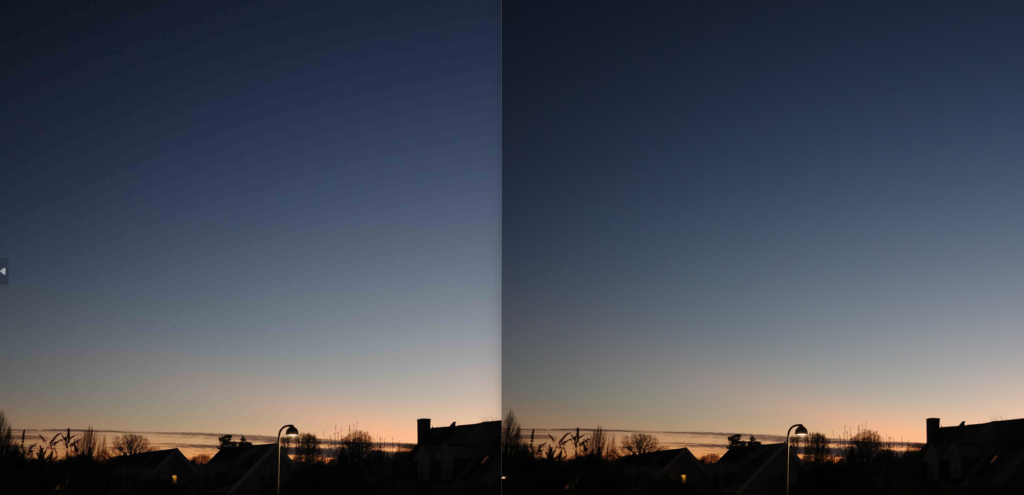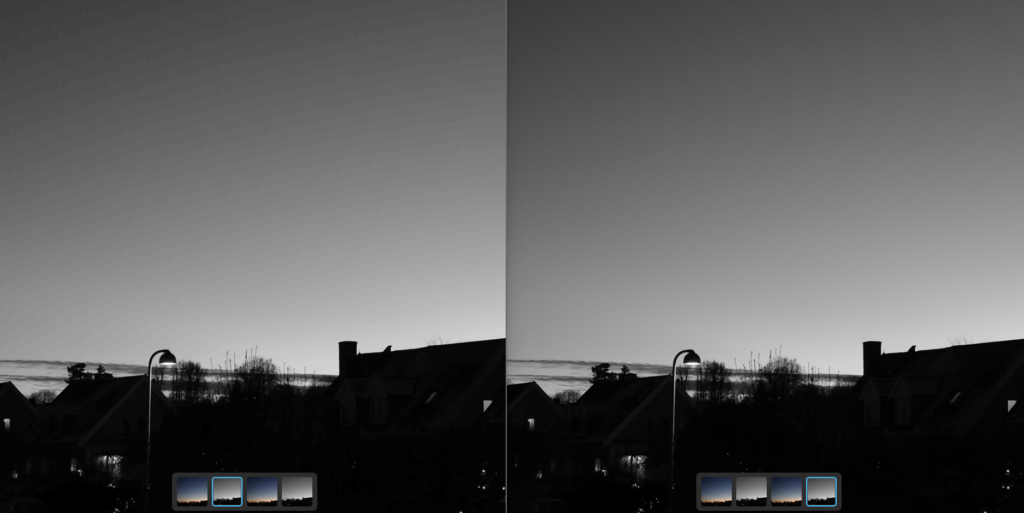Transitions
Banding is when the gradual transition from light to dark is not represented in a smooth and gradual way in the image, but rather abrupt changes from one level to another. It often happens in bands, just like you can see a height curve on a map. So that beautiful setting sun is not so beautiful, as the sky above it is shown as bands of red, orange and yellow!

On this homepage you will find a lot of banding going on, and that is because I have to export the images highly compressed to support fast load time.

So banding is very often caused by compression, i.e. that a JPG image is throwing away too much information as it compresses the file to save space. Being a bit of a photo nerd, I often notice banding then I watch a movie on my 48″ LG TV, and I think the banding also here is caused by compression.
Banding is easy to see when a color is transitioning slowly from dark to light, but it is just as noticeable in black and white (see above).
Resolution
Banding is not because the image has too little resolution, but because the information stored to reproduce each pixel is too little. So a fix can be to make sure the images are stored with 16-bits of information per channel rather than 8-bits, i.e. to shoot in RAW or TIFF formats and make sure the information per channel is 16-bits. However, the issue with banding is often not at the source, but when exporting it to JPGs and my best advice here is to go as light as possible with the compression.
Another fix is to introduce a bit of noise when editing the image, so the noise acts as details added to the image and hence softens the transition along the banding. This can be a good strategy if your image is created with too little information per pixel.
You can get into some very technical discussion around banding and why it happens and some photographers are very frustrated to find banding in their prints that is not on screen etc. I am no expert here and do not have all the answers. My ambition here was just to give some insights to what banding is and a few high level fixes should it come your way.
